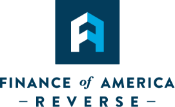If you are one of the millions of American’s nearing retirement, you may be feeling the stress of the market effects caused by the coronavirus. As the S&P 500, Dow Jones Industrial Average, and Nasdaq continue to fall and we approach bear-market territory, it’s essential to revisit your retirement plan.
People that were looking to fund their retirement plans with their retirement investments will have a difficult road ahead after a 4000-point drop in the stock market. Unfortunately, that means that many near-retirees are facing a financial situation that that will be difficult to recover from.
When you retire, your sensitivity to market volatility increases dramatically. Instead of falling back on your paycheck when the market is down, now you have to ride it out and withdraw from your investment portfolio to cover living expenses. If you are forced to cash out your investment holdings early in retirement when the market is down, your reduced number of shares left in your portfolio will not be enough to make up for the losses when the market eventually picks up.
The risk associated with withdrawing funds from an investment portfolio during market downturns is called “Sequence of Returns Risk” in financial planning. Unfortunately, market volatility related to the sequence of returns risk makes it unrealistic to plan for retirement using a simple, straight-forward rate of return. You can invest the same way in two different twenty-year periods and have drastically different results. Here is an example to help illustrate how the sequence of returns risks affects portfolio value over time:
Market Performance Scenario #1 Sequence of Returns
Bull Market followed by a Bear Market 21%, 21%, 21%, 7%, 7%, 7%, 7%, -7%, -7%, -7%
- Result: If this Bull/Bear cycle is repeated, the retiree has investment gains after 20 years, with an ending account balance of $140,483.
Market Performance Scenario #2 Sequence of Returns
Bear Market / Bull Market 10 year Cycle -7%, -7%, -7%, 7%, 7%, 7%, 7%, 21%, 21%, 21%
- Result: If this Bear/Bull cycle is repeated, the retiree will run out of retirement funds in 19 years.
Even though the average market returns were the same (7% average over 10 years), the draws, combined with the sequence of those returns created different outcomes. This is also called “volatility drain”, when funds are being drawn from a depleted asset.
While you can’t control this risk specifically, you can control your behavior and flexibility when reacting to the market sequence of your returns. Instead of relying solely on your investment portfolio to fund your retirement living expenses, financial experts, such as Dr. John Salter, recommend considering accessing home equity as an addition to your investment strategy at the beginning of your retirement. He calls this strategy a “standby reverse mortgage.” Based on his calculations, Dr. Salter finds that this strategy dramatically improves portfolio survival rates because it reduces volatility drain. Dr. Salter goes on to propose that incorporating a standby reverse mortgage line of credit early in retirement can increase sustainable withdrawal rates from 3.15% to 6%1.
Paying Back Standby Credit After Bull Market Years
To further balance your debt-to-asset ratio, Dr. Salter suggests paying back portions of your loan after periods of bull market performance. Home-equity can be drawn from a non-cancelable line of credit, giving homeowners control over when, and how much, they draw. The line of credit can be a “standby” and can be paid back at any time with no prepayment penalty. Dr. Salter proposes that by properly borrowing, re-balancing, and repairing a Line of Credit, borrowers can increase the probability they will meet their spending needs and improve the sustainability of their withdrawal rate.
Home equity can be a vital element in financial planning to avoid sequence of returns risk in retirement.
With the built-in consumer safeguards and flexible options for accessing equity, reverse mortgages are transforming the way people approach retirement. With any financial decision, it is important to carefully consider your options. The right financial advisor can guide you to a great decision that works with your financial goals.
1Pfeiffer, Shaun, John Salter, and Harold Evensky. 2013 “Increasing the Sustainable Withdrawal Rate Using the Standby Reverse Mortgage.? Journal of Financial Planning 26(12): 55-62.
DISCLOSURES:
Oregon Only:·When the loan is due and payable, some or all of the equity in the property that is the subject of the reverse mortgage no longer belongs to borrowers, who may need to sell the home or otherwise repay the loan with interest from other proceeds. FAR may charge an origination fee, mortgage insurance premium, closing costs and servicing fees (added to the balance of the loan).·The balance of the loan grows over time and FAR charges interest on the balance.· Borrowers are responsible for paying property taxes, homeowner’s insurance, maintenance, and related taxes (which may be substantial). We do not establish an escrow account for disbursements of these payments. A set-aside account can be set up to pay taxes and insurance and may be required in some cases. Borrowers must occupy home as their primary residence and pay for ongoing maintenance; otherwise the loan becomes due and payable. The loan also becomes due and payable (and the property may be subject to a tax lien, other encumbrance, or foreclosure) when the last borrower, or eligible non-borrowing surviving spouse, dies, sells the home, permanently moves out, defaults on taxes, insurance payments, or maintenance, or does not otherwise comply with the loan terms. Interest is not tax-deductible until the loan is partially or fully repaid.
©2020 Finance of America Reverse LLC is licensed in 50 states and D.C. | Equal Housing Opportunity | NMLS ID # 2285 | www.nmls.consumeraccess.org | 8023 East 63rd Place, Suite 700 | Tulsa, OK 74133 Not all products and options are available in all states | Terms subject to change without notice | AZ Mortgage Banker License #0921300 | Licensed by the Department of Business Oversight under the California Residential Mortgage Lending Act | Georgia Residential Mortgage Licensee | Illinois Residential Mortgage Licensee | Kansas Licensed Mortgage Company | MA Lender/Broker #MC2855 | Licensed by the Mississippi Department of Banking and Consumer Finance | Licensed by the New Hampshire Banking Department | Licensed by the N.J. Department of Banking and Insurance | Licensed Mortgage Banker — NYS Banking Department where Finance of America Reverse is known as FAReverse LLC in lieu of true name Finance of America Reverse LLC | Rhode Island Licensed Lender | HUD HECMS REQUIRE PAYMENT OF INITIAL AND PERIODIC MORTGAGE INSURANCE PREMIUM.
This article is intended for general informational and educational purposes only, and should not be construed as financial or tax advice. For more information about whether a reverse mortgage may be right for you, you should consult an independent financial advisor. For tax advice, please consult a tax professional.















I WANT TO KEEP UP TO DATE ON RETIREMENT TRENDS
Follow Us.